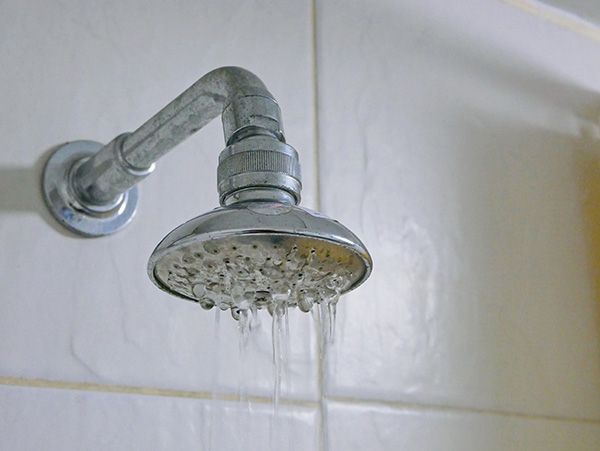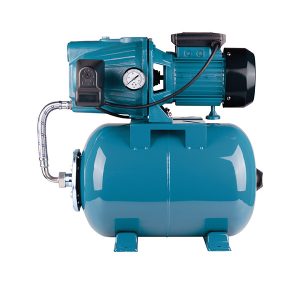
The Pleasure of Pressure
September 30, 2020 | By Steve Goldie
The showerhead needs two things to perform effectively, it needs sufficient water pressure and it needs sufficient water flow to maintain that pressure.

(Adobe Stock)
There is nothing quite like a worldwide pandemic to make you appreciate the simple pleasures of life. When life slows down, as it has for so many of us, we are able to notice those things we may have taken for granted during the frantic pace of so called “normal” life. The smell of coffee brewing in the morning, the sound of a child laughing, crisp clean sheets on a newly made bed; these are the kinds of simple pleasures that can sustain us amid the doom and gloom of uncertain times.
One of my favourite simple pleasures has always been a good long hot shower. Whether it is after a long day of work or a longer night of indulging in too much wine and too little sleep, there is nothing quite like a nice hot shower to rejuvenate and restore us to some semblance of humanity. Besides the hot water, the other essential element to a satisfying shower is good water pressure, and the lack of good pressure is one of the most common complaints we hear about in the plumbing industry.
A typical residential plumbing system is designed to operate at between 40 and 70 pounds per square inch (psi) of pressure. In a municipally delivered system, water pressure is maintained through a series of pumping stations, elevated water reservoirs and water towers. Every 28 inches of elevation (water column) provides one psi of pressure, which calculates to just over 64 psi at the bottom of a 150-foot water tower.
Water pressure at any individual home or business is determined by its proximity to the pumping station and or the water tower or reservoir serving it. For a residence that is on a private well, water pressure is maintained via the well pump, usually in conjunction with a pre-charged pressure tank.
When your customer is not getting enough water at the showerhead (or heads) the finger is always pointed at the water pressure, or lack of it, being the cause of the problem. However it may appear, poor water pressure is not always the culprit. The showerhead needs two things to perform effectively, it needs sufficient water pressure and it needs sufficient water flow to maintain that pressure.
Although both problems result in the same symptom, the solution depends on properly identifying the actual cause; is it insufficient flow or insufficient pressure?
Verifying the static pressure when all taps are turned off is as simple as attaching a pressure gauge at any point in the system. Gauges that attach to the hose connection are perfectly suited to this application. Most well systems should have gauges already installed making verifying the pressure even simpler. If the static pressure is lower than 40 psi then the problem is indeed a low pressure problem.
Booster pumps are available from multiple manufacturers in various sizes, and if a simple boost of pressure is all that is needed, your local wholesaler should be able to help find one that is right for your application.
To size one properly you need to know what the required boost is, for example from 35 psi to 60 psi, as well as how much flow is required in gallons per minute (gpm). Most shower fixture manufacturers should publish the flowrates of their showerheads, so this will help you determine the gpm required. Booster pumps are well suited to take advantage of the variable frequency drive (VFD) motors that are becoming more and more common in recent years. I would always recommend choosing the VFD option due to the vastly improved efficiency, quiet operation and very reliable results.
If the pressure was always culprit, the solution would always be the same; install a properly sized pump, adjust the pressure switch, and listen as everyone is singing in the shower. However, as I mentioned, pressure problems are very often not a pressure issue at all but rather a result of inadequate flow.
Let’s go back to our pressure gauge. When we check the pressure with all the taps turned off everything looks good. Now, have a look when one or two taps or fixtures are turned on. If the pressure drops dramatically, then the system piping is not able to supply sufficient flow to maintain adequate pressure.
The water service coming into the building may be undersized, or in an older building scale or corrosion may have built up restricting the flow. The same may be true of the distribution piping within the building; it may be undersized or obstructed. Providing the correct solution requires identifying where the deficiencies are located. Failing to correctly diagnose the cause of the problem can result in spending money and seeing no results.
Upgrading the incoming water service may be the best or most obvious solution. This likely requires trenching or torpedoing a new line in from the municipal service. If this option is not possible or too costly, a pressure pump system can be installed. These are very similar to those installed on private well systems, with a reservoir tank taking the place of the well (or lake).

Sample pump system (Adobe Stock photo)
Private well and pump systems include: the well (the water source), piping from the well to the building, a water pump, and a pressure tank to which building water supply plumbing is connected.
When water is turned on at a fixture, compressed air in the water pressure tank pushes water out into the buildings water supply piping and to its plumbing fixtures. The reservoir tank is not the same thing as the pressure tank, the pump cannot pull water through the service any faster than the service can already provide. The reservoir tank provides a ready supply of water for the pump to pull from, enabling the requisite boost in pressure and flow.
Too many times I have seen where a homeowner has paid good money for a pressure pump system only to have the same problem that existed before the system was installed. The reason; no reservoir tank was installed.
The key factor is providing enough flow to sustain the required pressure at the fixture. If you have a shower system that requires six gpm and the water service or well is only providing four gpm, there is no pump in existence that can fix this problem by itself.
I know that many contractors do great work and properly size their systems. Shower systems today are very different from those of just a few years ago, multi spray and large rainfall showerheads now seem to be the norm rather than the exception.
Dealing with pressure and flow problems in an older house is understandable, but having to live with it in a brand new home is never acceptable. Main supply lines and risers, both hot and cold, should be ¾-in. minimum, with ½-in. lines only used as feeders to individual fixtures.
Homerun systems are more popular than ever and offer very good results. A ¾-in. pipe has almost 50% more circumference and nearly 132% greater cross-sectional area than a half inch pipe. This means much more water, less resistance and, therefore, much more pressure and flow at the fixtures.
The difference in cost between doing it right or not is but a proverbial drop in the bucket, and few homeowners would hesitate to pay if they understood the benefits. It is a small price to pay for the ability to shower unencumbered without worry about who is flushing what.
Properly designed, installed and maintained plumbing systems are essential to our domestic happiness and bliss. It may just be that the simple pleasures, such as good hot showers, may just be the things that keep us all sane and prevent us from descending into full blown chaos. Who knew the humble plumber was responsible for keeping our civilization civilized? <>

 Steve Goldie learned his trade from his father while working as a plumber in the family business. After 21 years in the field, he joined the wholesale side of the business in 2002. His expertise is frequently called on to troubleshoot systems and advise contractors. He can be reached at sgoldie@nextsupply.ca.
Steve Goldie learned his trade from his father while working as a plumber in the family business. After 21 years in the field, he joined the wholesale side of the business in 2002. His expertise is frequently called on to troubleshoot systems and advise contractors. He can be reached at sgoldie@nextsupply.ca.


